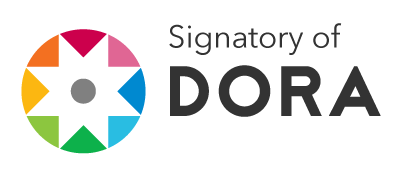The Entrepreneurship of Hispanic Edutubers and their Contribution to Learning
Youtube Video Classification and Analysis of Comments during COVID-19
DOI:
https://doi.org/10.37467/revedu.v10.3392Keywords:
Emprendimiento digital, videos educativos, edutubers hispanos, clasificación de videos youtube, aprendizaje en línea, auge durante COVID-19Abstract
Entrepreneurs most often direct their intentions towards digital information technologies, this is an economic and social phenomenon based on internet services. Companies like YouTubeä have allowed millions of people to continuously transmit videos with various themes. Through a classification of educational videos from YouTube, the comments of 20 videos of "teachers" were coded to analyze the learning of those who consult the videos. It was discovered that more than 20% of the comments establish the pedagogical consultation as something practical and useful in their academic training and that the reproductions increased during COVID-19.
Downloads
Global Statistics ℹ️
|
531
Views
|
773
Downloads
|
|
1304
Total
|
|
References
Anderson, C. (2006). The Long Tail: Why the Future of Business Is Selling Less of More. Hyperion.
Arellano, P. R., Pérez, V. G., & Fernández, I. B. (2020). YouTube and influencers in childhood. Content analysis and educational proposals. Icono14, 18(2), 269–295. https://doi.org/10.7195/RI14.V18I2.1455 DOI: https://doi.org/10.7195/ri14.v18i2.1455
Bajo, M. T., Fernandez, Á., Ruiz, M. y Gómez-Ariza, C. (2016). Memoria: estructura y funciones. En M. T. Bajo, L. J. Fuentes, J. Lupiáñez y R. Rueda (Eds.), Mente y cerebro: de la psicología experimental a la neurociencia cognitiva, pp. 205–236. Alianza Editorial. https://bit.ly/3BeOjye
Bétrancourt, M., & Benetos, K. (2018). Why and when does instructional video facilitate learning? A commentary to the special issue “developments and trends in learning with instructional video”. Computers in Human Behavior, 89, 471–475. https://doi.org/10.1016/j.chb.2018.08.035 DOI: https://doi.org/10.1016/j.chb.2018.08.035
Bhatia, A. (2018). Interdiscursive performance in digital professions: The case of YouTube tutorials. Journal of Pragmatics, 124, 106–120. https://doi.org/10.1016/j.pragma.2017.11.001 DOI: https://doi.org/10.1016/j.pragma.2017.11.001
Carreón, D. (4 de junio de 2019). ¿Que es un EDUTUBER? - Soy edutuber [Archivo de video]. YouTube. https://www.youtube.com/watch?v=S6Z_SYtXLVo
Choi, G. Y. (2018). Learning through digital storytelling: exploring entertainment techniques in lecture video. Educational Media International, 55(1), 49–63. https://doi.org/10.1080/09523987.2018.1439710 DOI: https://doi.org/10.1080/09523987.2018.1439710
Davidson, C., Given, L. M., Danby, S., & Thorpe, K. (2014). Talk about a YouTube video in preschool: The mutual production of shared understanding for learning with digital technology. Australasian Journal of Early Childhood, 39(3), 76–83. https://doi.org/10.1177/183693911403900310 DOI: https://doi.org/10.1177/183693911403900310
Derakhshan, A., Lee, L., Bhama, P., Barbarite, E., & Shaye, D. (2019). Assessing the educational quality of ‘YouTube’ videos for facelifts. American Journal of Otolaryngology, 40(2), 156–159. https://doi.org/10.1016/j.amjoto.2019.01.001 DOI: https://doi.org/10.1016/j.amjoto.2019.01.001
Diao, M., & Hedberg, J. G. (2020). Mobile and emerging learning technologies: are we ready? Educational Media International, 57(3), 233–252. https://doi.org/10.1080/09523987.2020.1824422 DOI: https://doi.org/10.1080/09523987.2020.1824422
Ding, X., & Yang, Z. (2020). Knowledge mapping of platform research: a visual analysis using VOSviewer and CiteSpace. Electronic Commerce Research, 0123456789. https://doi.org/10.1007/s10660-020-09410-7 DOI: https://doi.org/10.1007/s10660-020-09410-7
Dussel, I., Ferrante, P., & Pulfer, D. (2020). Pensar la educacion en tiempos de pandemia: Entre la emergencia, el compromiso y la espera. En Pensar la educación en tiempos de pandemia: entre la emergencia, el compromiso y la espera. Unipe. Editorial universitaria.
Garrett, N. (2016). Mapping Self-Guided Learners’ Searches for Video Tutorials on YouTube. Journal of Educational Technology Systems, 44(3), 319–331. https://doi.org/10.1177/0047239515615851 DOI: https://doi.org/10.1177/0047239515615851
Gil-Quintana, J., Malvasi, V., Castillo-Abdul, B., & Romero-Rodríguez, L. M. (2020). Learning leaders: Teachers or youtubers ? Participatory culture and STEM competencies in italian secondary school students. Sustainability (Switzerland), 12(18). https://doi.org/10.3390/SU12187466 DOI: https://doi.org/10.3390/su12187466
Gimenez-Perez, G., Robert-Vila, N., Tomé-Guerreiro, M., Castells, I., & Mauricio, D. (2020). Are YouTube videos useful for patient self-education in type 2 diabetes? Health Informatics Journal, 26(1), 45–55. https://doi.org/10.1177/1460458218813632 DOI: https://doi.org/10.1177/1460458218813632
González-Torres, T., Rodríguez-Sánchez, J.-L., Pelechano-Barahona, E., & García-Muiña, F. E. (2020). A systematic review of research on sustainability in mergers and acquisitions. Sustainability (Switzerland), 12(2), 1–18. https://doi.org/10.3390/su12020513 DOI: https://doi.org/10.3390/su12020513
Jackman, W. M., & Roberts, P. (2014). Students’ Perspectives on YouTube Video Usage as an E-Resource in the University Classroom. Journal of Educational Technology Systems, 42(3), 273–296. https://doi.org/10.2190/et.42.3.f DOI: https://doi.org/10.2190/ET.42.3.f
Keskin, B. (2018). What Do YouTube Videos Say About Public Education? SAGE Open, 8(1). https://doi.org/10.1177/2158244018757831 DOI: https://doi.org/10.1177/2158244018757831
Leary, H., & Walker, A. (2018). Meta-Analysis and Meta-Synthesis Methodologies: Rigorously Piecing Together Research. TechTrends, 62(5), 525–534. https://doi.org/10.1007/s11528-018-0312-7 DOI: https://doi.org/10.1007/s11528-018-0312-7
López, J. (2018). YouTube like tool for the construction of the society of the knowledge. Revista de Ciencias Humanísticas y Sociales, 3(1), 1–16. https://doi.org/10.33936/rehuso.v3i1.1225 DOI: https://doi.org/10.33936/rehuso.v3i1.1225
Massieu, A., & Díaz-Barriga, F. (2020). Educational videos on YouTube: a tool for developing clinical skills in medical students. Educacion Medica, xx, 1–6. https://doi.org/10.1016/j.edumed.2020.03.001 DOI: https://doi.org/10.1016/j.edumed.2020.03.001
Math2me. (18 de septiembre de 2019). Qué es un EDUTUBER [Archivo de video]. YouTube. https://www.youtube.com/watch?v=1BY2VaDNG0Y
McLuhan, M. (1996). Comprender los medios decomunicación. Las extensiones del ser humano (1a). Paidós.
Nokia. (2020). Nokia Deepfield 2020 report shows huge spike in internet traffic and how well the network handled it. Webpage. https://bit.ly/3D3bk8U
Orduña-Malea, E., Font-Julián, C. I., & Ontalba-Ruipérez, J.-A. (2020). COVID-19: análisis métrico de vídeos y canales de comunicación en YouTube. Profesional de la Informacion, 29(4), 1–14. https://doi.org/10.3145/epi.2020.jul.01 DOI: https://doi.org/10.3145/epi.2020.jul.01
Orús, C., Barlés, M. J., Belanche, D., Casaló, L., Fraj, E., & Gurrea, R. (2016). The effects of learner-generated videos for YouTube on learning outcomes and satisfaction. Computers and Education, 95, 254–269. https://doi.org/10.1016/j.compedu.2016.01.007 DOI: https://doi.org/10.1016/j.compedu.2016.01.007
Pasaoglu, A., & Aras, I. (2021). Cleft Lip and Palate YouTube Videos: Content Usefulness and Sentiment Analysis. Cleft Palate-Craniofacial Journal, 58(3), 362–368. https://doi.org/10.1177/1055665620948722 DOI: https://doi.org/10.1177/1055665620948722
Ramírez-Ochoa, M. I. (2016). Posibilidades del uso educativo de youtube. Ra Ximhai, 12(6), 537–546. https://bit.ly/3RjfI7L DOI: https://doi.org/10.35197/rx.12.01.e3.2016.34.mr
Sala-Google SE. (8 de julio de 2020). 13. Edutubers Se parte de la era digital [Archivo de video]. YouTube. https://www.youtube.com/watch?v=1BpHIygxbe0
Saurabh, S., & Gautam, S. (2019). Modelling and statistical analysis of YouTube’s educational videos: A channel Owner’s perspective. Computers and Education, 128(May 2018), 145–158. https://doi.org/10.1016/j.compedu.2018.09.003 DOI: https://doi.org/10.1016/j.compedu.2018.09.003
Shoufan, A. (2018). Estimating the cognitive value of YouTube’s educational videos: A learning analytics approach. Computers in Human Behavior. https://doi.org/10.1016/j.chb.2018.03.036 DOI: https://doi.org/10.1016/j.chb.2018.03.036
Social-Blade. (2022). Métricas de YouTube. https://socialblade.com/
Tomasena, J. (2019). ¿Qué podemos aprender los educadores de los Booktubers? En J. Mateus (Ed.), MayéuTIC@ (pp. 185–198). Fundación Telefónica del Perú.
Tomasena, J. M. (2019). Negotiating Collaborations: Booktubers, The Publishing Industry, and YouTube’s Ecosystem. Social Media and Society, 5(4). https://doi.org/10.1177/2056305119894004 DOI: https://doi.org/10.1177/2056305119894004
Topu, F. B., & Goktas, Y. (2019). The effects of guided-unguided learning in 3d virtual environment on students’ engagement and achievement. Computers in Human Behavior, 92, 1–10. https://doi.org/10.1016/J.CHB.2018.10.022 DOI: https://doi.org/10.1016/j.chb.2018.10.022
Tuelé, J. (2015). Procesos cognitivos relacionados con el aprendizaje de la lectura del alumnado de Educación Primaria. Universidad Internacional de la Rioja.
Veritasium. (1 de mayo de 2022). El Mayor Mito sobre la Educación [Archivo de video] YouTube. https://www.youtube.com/watch?v=gcEiwX7JpNs&t=37s
Downloads
Published
How to Cite
Issue
Section
License
Those authors who publish in this journal accept the following terms:
-
Authors retain copyright.
-
Authors transfer to the journal the right of first publication. The journal also owns the publishing rights.
-
All published contents are governed by an Attribution-NoDerivatives 4.0 International License.
Access the informative version and legal text of the license. By virtue of this, third parties are allowed to use what is published as long as they mention the authorship of the work and the first publication in this journal. If you transform the material, you may not distribute the modified work. -
Authors may make other independent and additional contractual arrangements for non-exclusive distribution of the version of the article published in this journal (e.g., inclusion in an institutional repository or publication in a book) as long as they clearly indicate that the work was first published in this journal.
- Authors are allowed and recommended to publish their work on the Internet (for example on institutional and personal websites), following the publication of, and referencing the journal, as this could lead to constructive exchanges and a more extensive and quick circulation of published works (see The Effect of Open Access).













